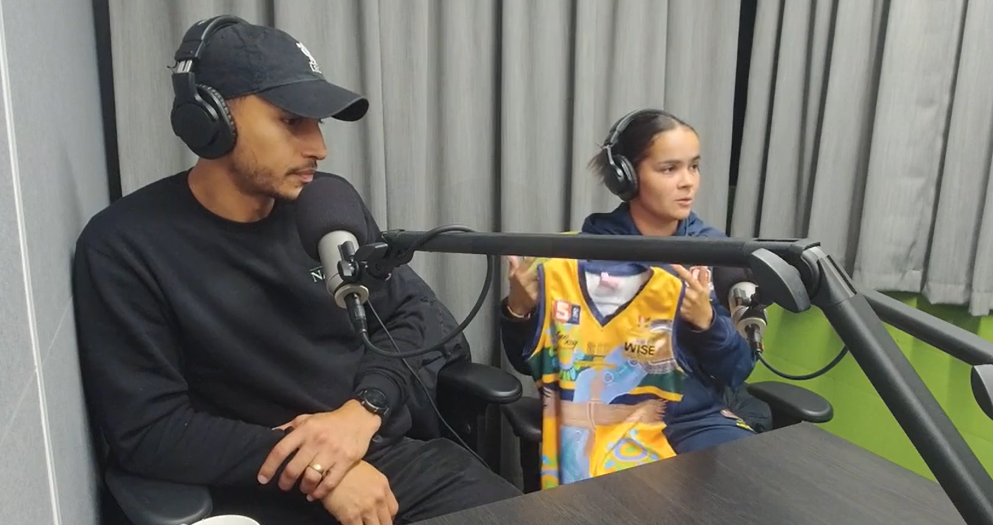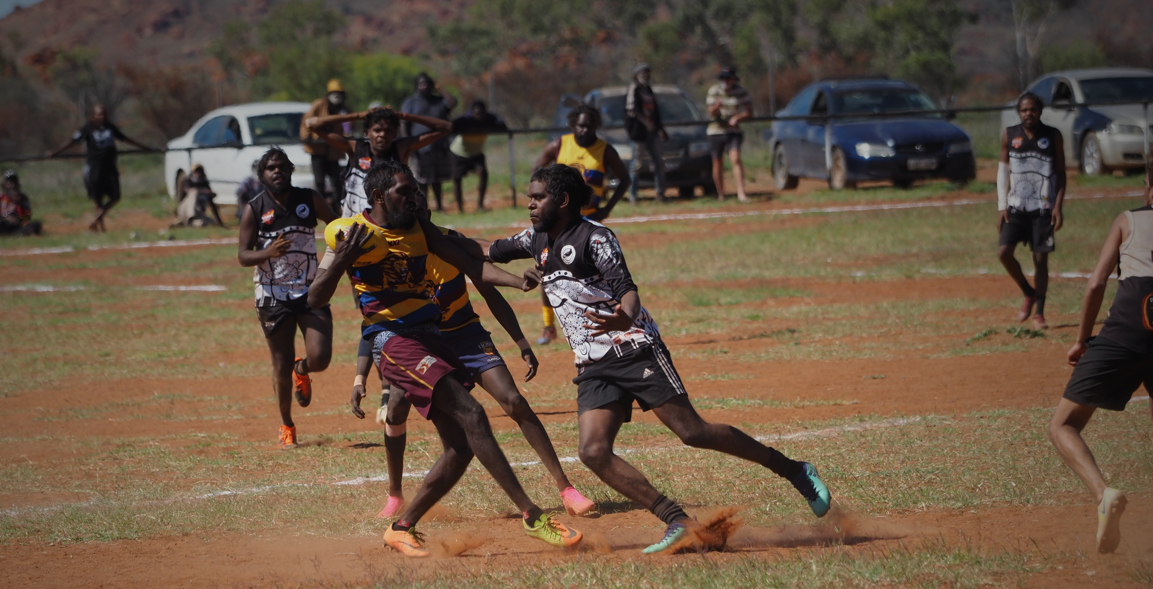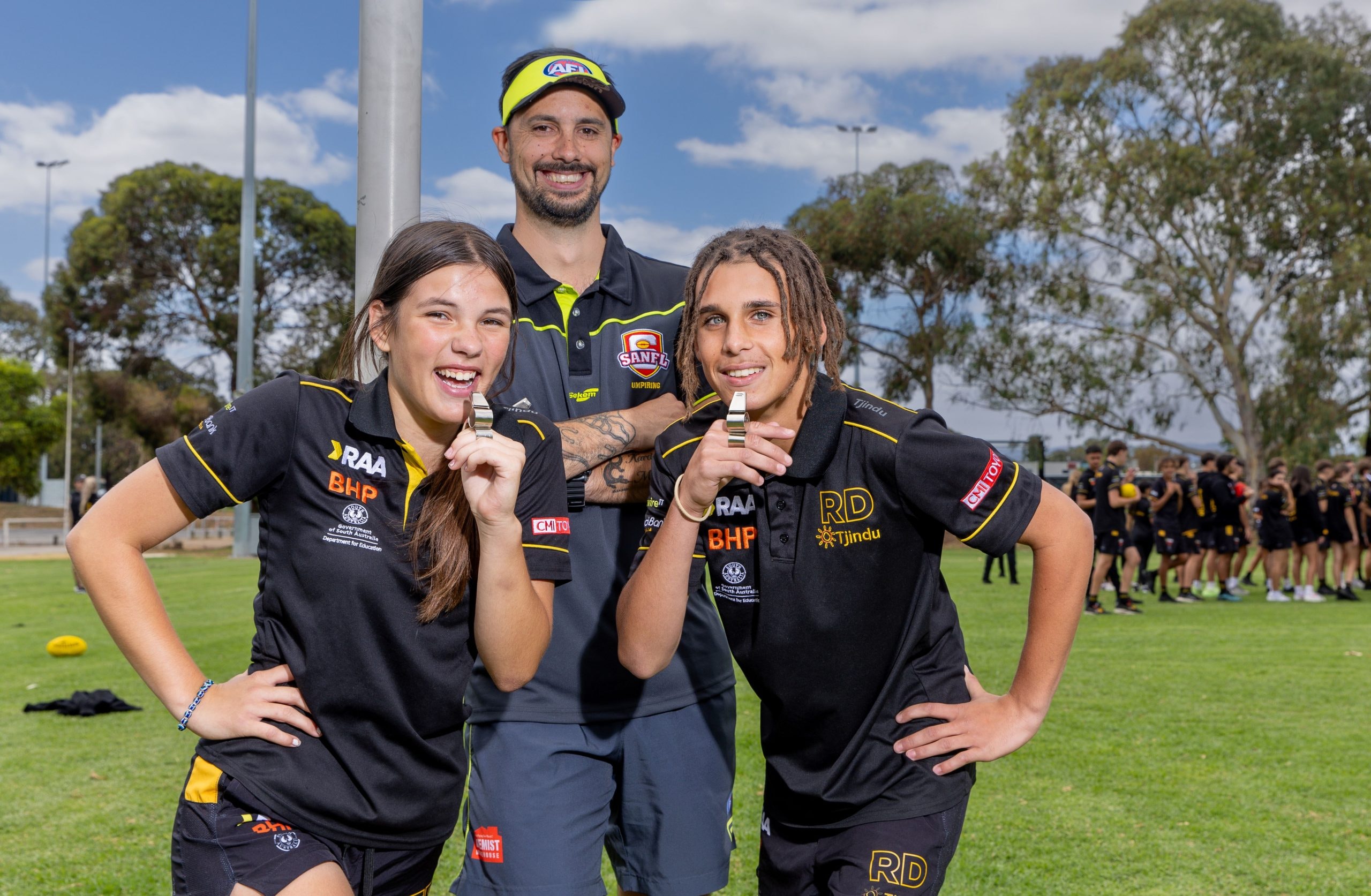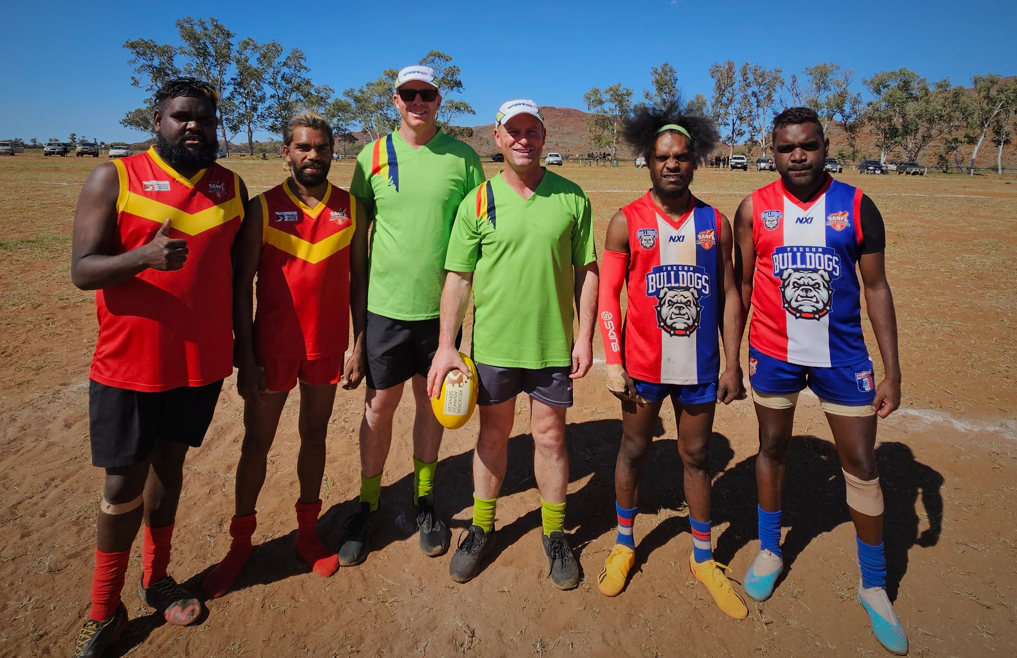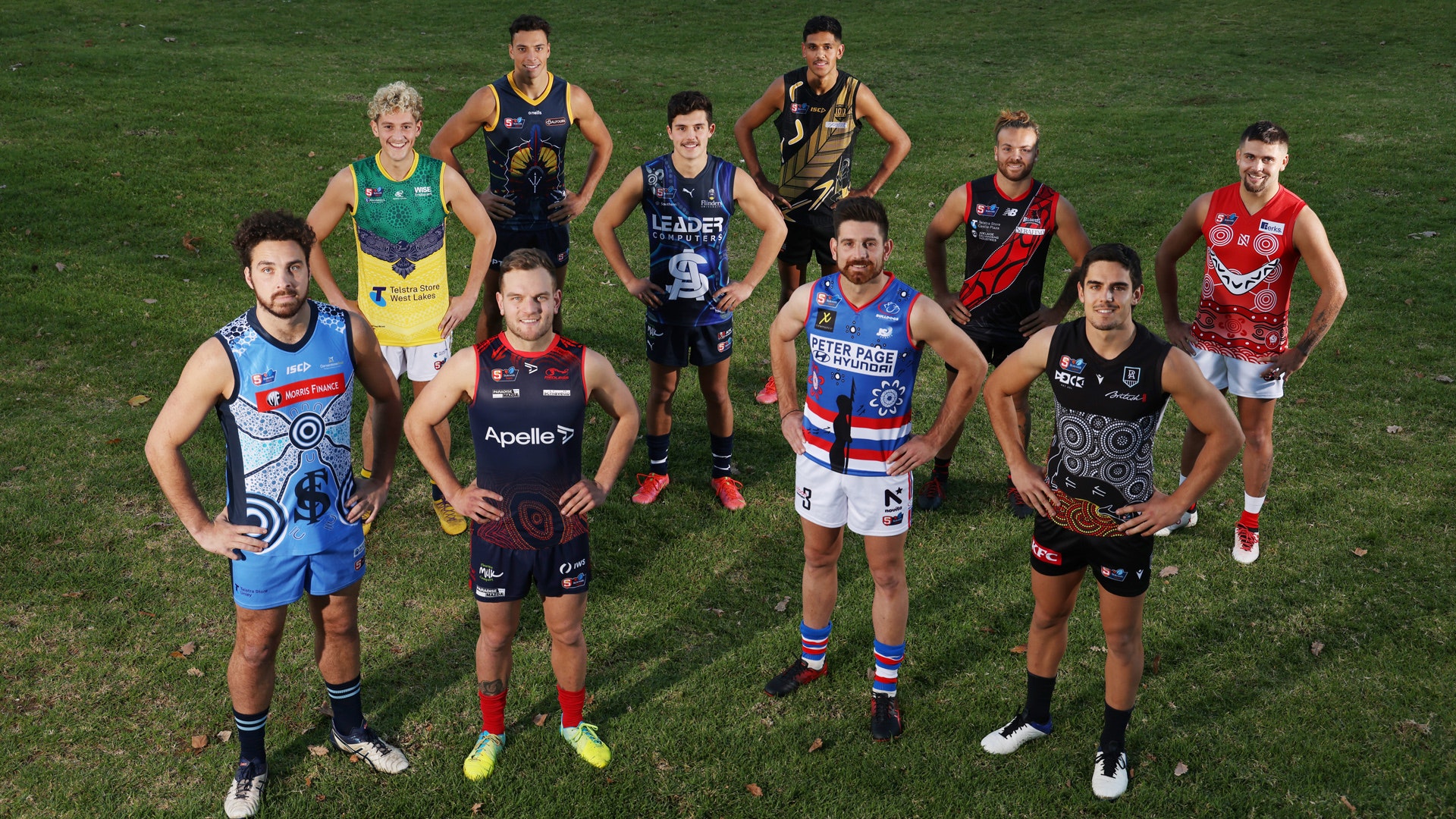
Celebrating Australia’s Indigenous Cultures
From footballer to artist, SANFL’s Indigenous Round jumpers were packed full of significance that goes deeper than clever design. They were a rich tapestry of art, club spirit, and cultural significance.
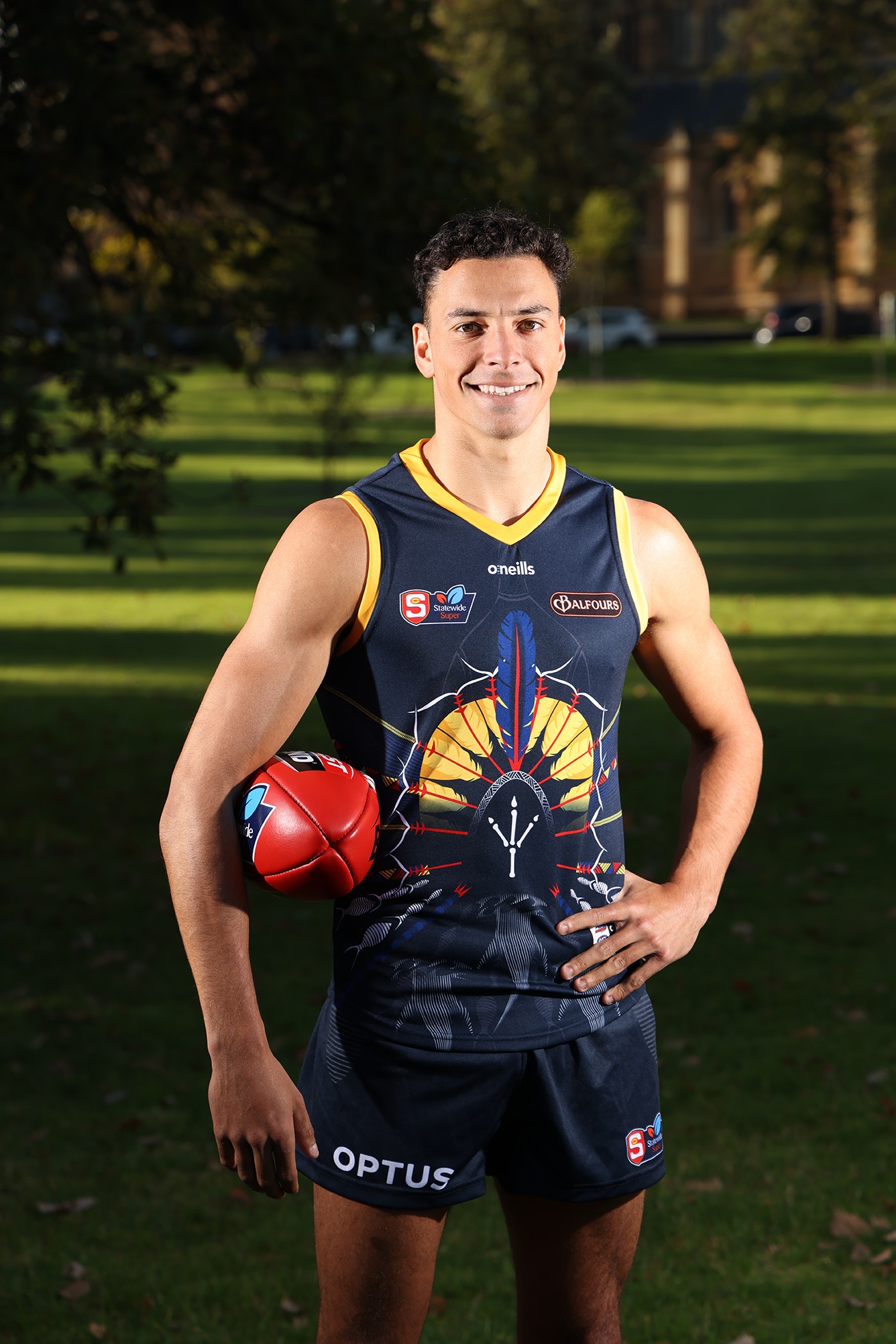
Adelaide’s Ben Davis in the Crows guernsey he designed for Indigenous Round.
By ANNA KANTILAFTAS
When Ben Davis was asked to design the Adelaide Football Club Indigenous guernsey, he knew it was an opportunity that went well beyond the honour of running onto a field in his own artwork.
Davis, whose paternal family hails from Thursday Island in the Torres Strait, grew up disconnected from his culture.
Joining programs like the Flying Boomerangs opened the youngster’s eyes to the diversity of Australia’s First Nations cultures, but Davis says he always felt like he was on the outer.
“When I was in the Boomerangs Under 15s, I was around these kids who were speaking broken English and speaking about their culture, they were really in touch with their heritage,” Davis says.
“It was always something that made me feel a little bit uncomfortable, that I didn’t know enough about my culture.”
At the time, though, a mid-teen Davis wasn’t all that interested in pursuing a cultural education. Fast forward a few years to 2016 when he was drafted by the Crows, and the influence of teammates, Eddie Betts, Charlie Cameron, Wayne Milera, and Cameron Ellis-Yolmen, had the young Crow inspired to connect with his cultural identity.
“In a lot of ways, my path, from the start, was never going to be to learn my culture off my dad, so I think a lot of the influences along the way, which I wouldn’t have had without footy, pushed me into the direction and led me to where I am now,” Davis says.
“These guys knew a lot about their culture, they grew up around it… Each year in Indigenous Round, seeing them so proud of their culture, and seeing Eddie so proud to teach people… it really struck a chord with me.
“It made me realise that your culture is part of who you are… it guides you in life, and that was just the final thing that made me want to go and pursue my culture and learn from someone.”
And then, fate played its hand.
When asked if he would like to design the guernsey, Davis knew it would be a good opportunity to dive deeper into his Torres Strait Islander heritage, something he had already started learning through Eddie Peters, a community leader from the Torres Strait.
“What better way to do that than an art piece representing my culture and the club,” he says.
The story, he tells, is inspired by the Crows building a culture with a very fresh playing group. Elements on the jumper represent younger players, pushed forward and supported by the senior players, and coming together to achieve a common goal: success.
A traditional Kaurna shield stands strong in the background, paying respect to the land the club plays on. A crow’s foot represents the club, and a Torres Strait Islander headdress marks a sign of respect to his traditional culture, and hammerhead sharks swim on the bottom seams, drawn from Davis’ totem. The turtle featured on the back represents one of the main food sources for Torres Strait people, but Davis says its significance is also linked to his view of the club.
“Adelaide Football Club has had to go through some challenges and it has had to be fairly resilient. I thought a turtle is a great representation of that, having a hard shell and having to be strong through it all.”
The Crows SANFL side ran out onto the oval in its Indigenous jumper in Round 9, to coincide with Reconciliation Week and the AFL’s Sir Douglas Nicholls Round
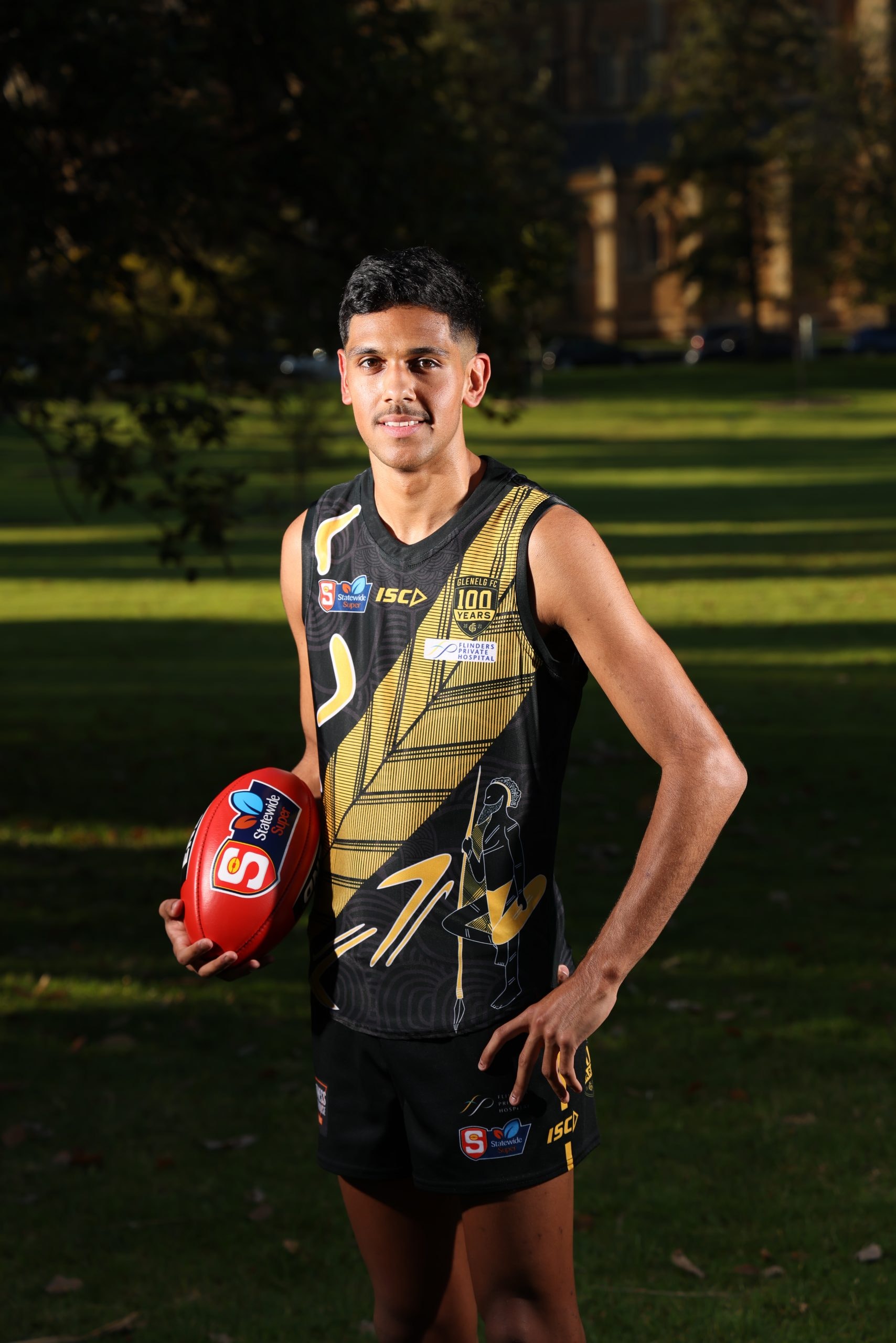
Glenelg’s Nasiah Wanganeen-Milera sports Glenelg’s Indigenous Round guernsey, designed by Marlon Motlop.
Glenelg’s guernsey was designed by vice-captain, Marlon Motlop alongside his artist cousin, Keelan Fejo.
The Tigers’ design incorporates elements that represent Darwin-born Motlop’s Aboriginal and Torres Strait Islander cultures, with a story that focuses on community and the interconnectedness of First Nations peoples, and the replication of that within a football club.
The cross hatching in the sash, Motlop explains, is symbolic of this.
“Within a football club, it’s not just about the football or the 22 players out on the ground. You have different departments and different people from all walks of life… we’re all intertwined in one way or another,” Motlop says.
“The cross hatching is symbolic of my Country, Larrakia Country, as well as Yolngu Country in north-east Arnhem Land. Our people would paint with grass strands and use that to paint cross hatching which represents different songlines and the interconnectedness of our culture.”
A silvery underlayer in the design speaks for the trade winds of the Torres Strait, home to Motlop’s grandfather.
“For me looking at that songline, it symbolises the different people and different cultures at a football club… people from all over the globe coming together to achieve a common goal through football.”
Growing up, Motlop spent his childhood surrounded by family, hunting and fishing on weekends, and learning about songlines and stories that related to Country. It’s this connection to his cultures and family that Motlop says is one of the reasons he is most proud of the Tigers’ Indigenous guernsey.
“It’s a reflection of my heritage. Of my grandmothers and grandfathers who are no longer with us but I wear them proudly on that guernsey every year, as do the other indigenous players.”
Motlop says that it’s through opportunities, like Indigenous Round, that he can use that knowledge to educate his peers on where he’s from and offer an insight into the life of First Nations people. “As Aboriginal people, our culture is about sharing, learning, educating and listening as well… Every day we’re trying to do just that, but in terms of this round, it makes sense to take the opportunity to really amplify that.”
More than a platform, however, for Motlop and his peers, Indigenous Round is about acknowledging the Aboriginal and Torres Strait Islander leaders and pioneers of the game, who have created pathways for a new generation of Indigenous footballers.
“Without people like that working through those tougher times in our country, and putting up what they had to, we wouldn’t be able to freely walk onto an oval and only have to worry about finding a footy and playing our role in the side. Our game is better off today because of the challenges our elders faced.”
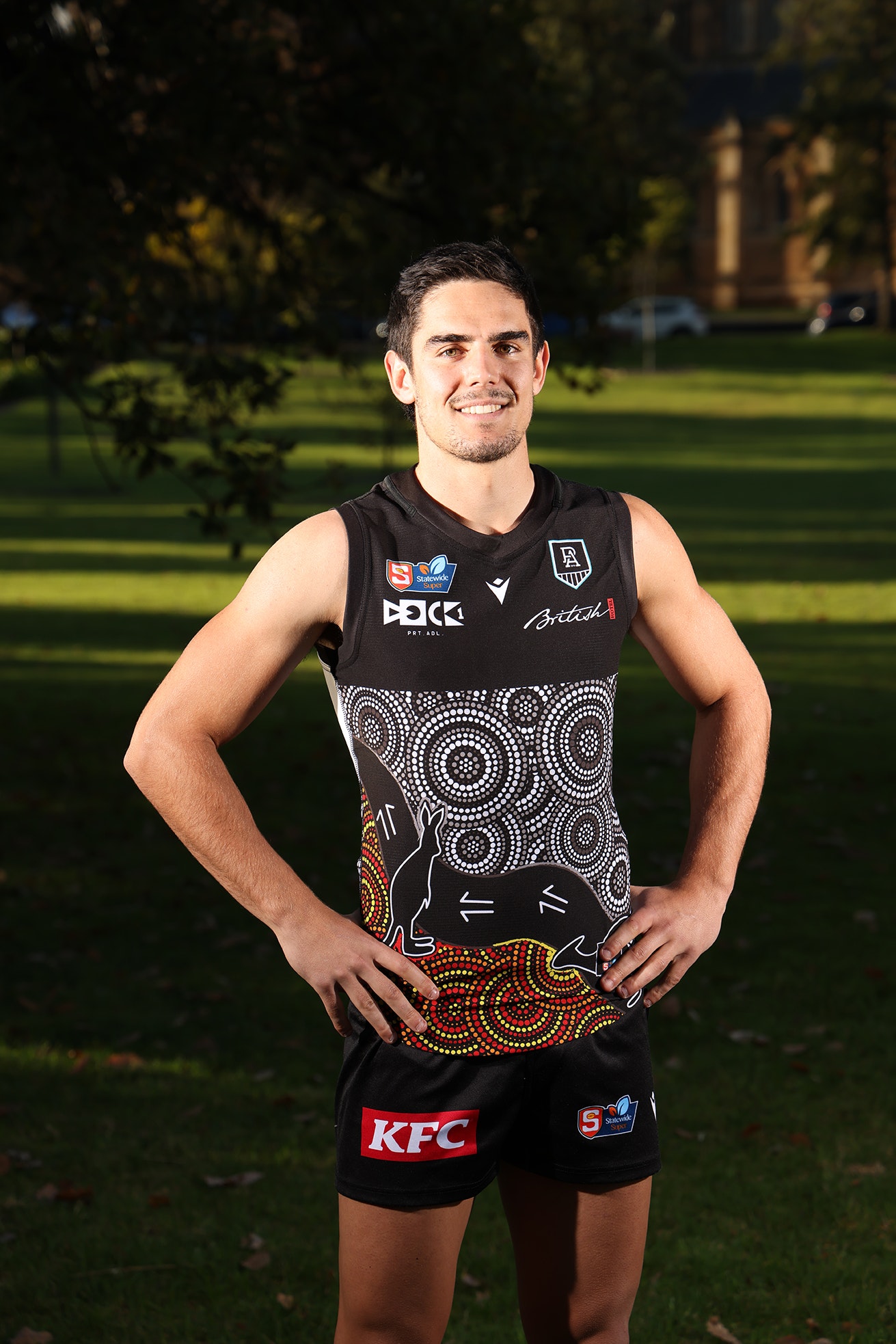
Port’s Joel Garner wears his team’s Indigenous Round guernsey.
Port Adelaide’s Joel Garner shares a similar sentiment to Motlop.
Port’s SANFL side wore a modified version of its AFL jumper, designed by local artist Elle Campbell. The design, named “Kangaroos on the Coast”, is based on one of her paintings, which was inspired by a photo sent to her by her mother of some Kangaroos near a burial ground in Kingston, in the state’s South East.
“It’s an honour for anybody, not just the Indigenous players playing,” Garner says. “From my perspective, being Indigenous Australian, it’s quite a proud moment… where you feel like the Indigenous players that have shaped the game, it’s recognition for them, what they’ve done for our game, and the contribution they’ve had.”
Garner grew up in Healesville, Victoria – home to the Wurundjeri people – but says his family are from the Northern Territory’s Marra tribe in the south-east of the state.
Despite his family living on the other side of the country, Garner has maintained a close connection to culture, albeit through connections in Victoria and football.
“Being in Victoria, I’m pretty close to Country where I grew up, and I’ve connected with the elders of that tribe. I’m not so connected with the Marra tribe, but I am proud to be an Indigenous person,” he says, adding that the influence from his grandmother meant he has always remained linked to heritage.
The Magpies were just one team who will take to the field this year in a jumper designed by an external artist, with North Adelaide, South Adelaide, Sturt, West Adelaide, and Central all following suit. The remaining four clubs engaged player-designed jumpers.
Dom Barry pieced the Norwood jumper together, while Andrew McLeod and his son Connor designed the Eagles’ jumper, connecting the club’s history through an intricate and detailed design, also including the totems of each of the club’s Indigenous players.
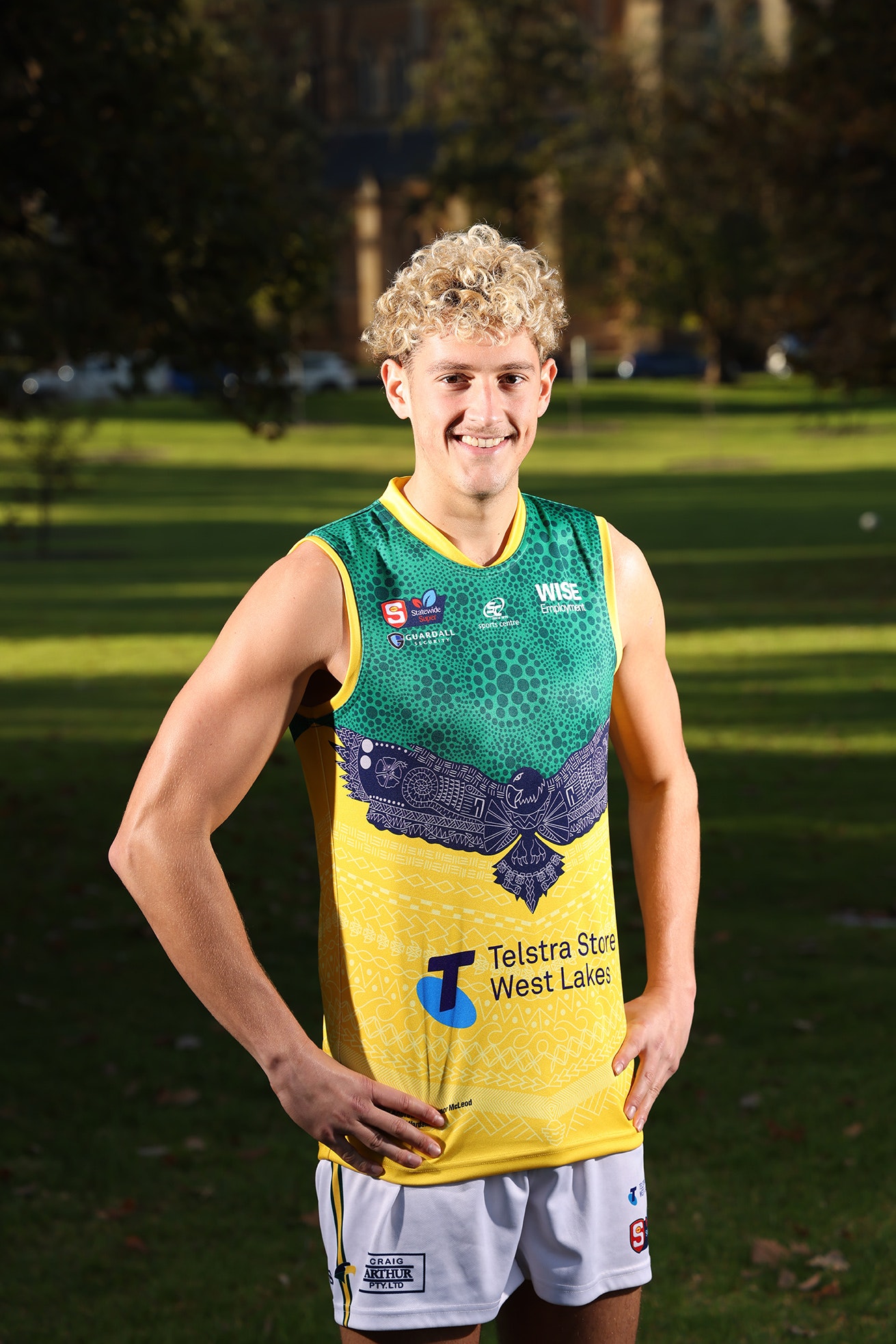
Eagle Connor McLeod in the guernsey he designed with his father, Andrew.
Related News
-
 First Nations
First NationsStrong SANFL connection at 2025 AFL Indigenous All-Stars match
-
 First Nations
First NationsSANFL Juniors to celebrate NAIDOC Week with First Nations Round
-
 Checkside Chats
Checkside ChatsCheckside Chats with Marlon Motlop and Channi Mitchell
-
 First Nations
First Nations2024 First Nations Round Guernsey Designs
-
 First Nations
First NationsThe People’s Champion – Sonny Morey
-
 First Nations
First Nations2024 SANFL APY League ready for kickoff
-
 Umpiring
UmpiringSANFL launches groundbreaking Indigenous Umpiring Program
-
 Community Footy
Community FootyAn ”unreal” experience for SANFL premiership greats



